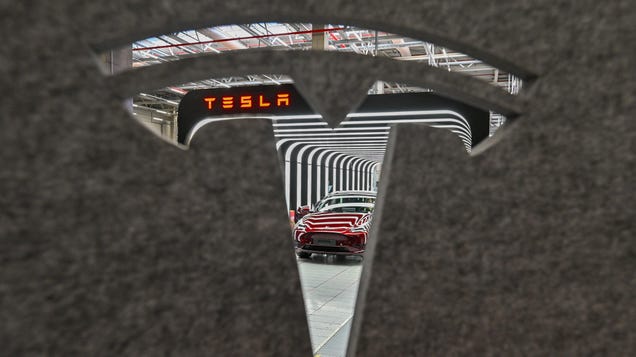Tesla’s Position in the Electric Vehicle Market: An Evolving Landscape
The electric vehicle (EV) market has seen remarkable growth over the past few years, with Tesla often hailed as the pioneer and leader in this transformative industry. However, recent developments indicate that the company’s grip on the market is beginning to loosen. As competition intensifies, particularly from manufacturers in China and Europe, Tesla faces new challenges that could reshape its future. This article explores the current state of Tesla’s market dominance, the emerging competition, and what it means for consumers and the industry at large.
Understanding Tesla’s Current Market Share
Tesla has long been synonymous with electric vehicles, capturing a significant portion of the market since its inception. According to recent data from the International Energy Agency (IEA), Tesla accounted for approximately 14% of global EV sales in 2023. While this figure still positions Tesla as a leading player, it marks a decline from previous years, highlighting the increasing competition from both established automakers and new entrants.
The third quarter of 2024 revealed a surprising dip in Tesla’s vehicle deliveries, falling short of analysts’ expectations. This trend raises questions about the sustainability of Tesla’s market dominance as more compelling alternatives become available. For instance, brands like Rivian, Lucid Motors, and traditional automakers such as Ford and General Motors have ramped up their EV offerings, providing consumers with a wider array of choices.
The Rise of Competitors: Who’s Challenging Tesla?
Tesla’s challenges are not solely from startups; established automakers are also making significant strides in the EV sector. For example, Ford’s Mustang Mach-E and the F-150 Lightning have gained considerable traction, appealing to consumers who may have previously been loyal to Tesla. Meanwhile, European manufacturers like Volkswagen and BMW are investing heavily in EV technology, aiming to capture market share with their own innovative models.
In China, the landscape is even more competitive. Companies like NIO, Xpeng, and BYD are not only producing high-quality electric vehicles but are also leveraging advanced technologies such as battery swapping and autonomous driving features. These innovations resonate with consumers who are increasingly looking for convenience and cutting-edge technology in their vehicles.
Consumer Preferences: What Do Buyers Want?
As the EV market evolves, consumer preferences are also shifting. A recent survey conducted by McKinsey & Company found that buyers are prioritizing factors such as range, charging infrastructure, and price when selecting an electric vehicle. Tesla has historically excelled in these areas, but as competitors enhance their offerings, consumers may begin to weigh other factors, such as brand loyalty and customer service.
Moreover, the growing emphasis on sustainability is influencing purchasing decisions. Many consumers are now considering the environmental impact of their vehicle choices, prompting manufacturers to adopt more sustainable practices in production and supply chain management. Tesla’s commitment to sustainability has been a key selling point, but it must continue to innovate and communicate its environmental initiatives effectively to maintain consumer trust.
The Future of Tesla: Strategies for Retaining Market Leadership
To navigate this increasingly competitive landscape, Tesla must adopt a multifaceted strategy. One approach could involve expanding its product lineup to cater to diverse consumer needs. For instance, introducing more affordable models could attract a broader audience, particularly in markets where price sensitivity is high.
Additionally, enhancing customer service and support could differentiate Tesla from its competitors. As the EV market matures, consumers will expect not only high-quality vehicles but also exceptional after-sales service. Investing in customer experience could foster brand loyalty and encourage repeat purchases.
Furthermore, Tesla should continue to innovate in battery technology and charging infrastructure. As the demand for EVs grows, so does the need for efficient charging solutions. By leading the charge in battery technology, Tesla can ensure its vehicles remain competitive in terms of range and charging time, addressing one of the primary concerns for potential EV buyers.
Navigating Regulatory Challenges and Global Markets
Tesla’s expansion into international markets has not been without its challenges. Regulatory hurdles, particularly in Europe and China, can complicate operations and affect sales. Understanding and adapting to these regulations will be crucial for Tesla’s continued success abroad. Collaborating with local governments and stakeholders can help Tesla navigate these complexities and build a favorable operating environment.
In conclusion, while Tesla remains a dominant force in the electric vehicle market, the landscape is rapidly changing. With increasing competition and evolving consumer preferences, the company must adapt and innovate to retain its leadership position. By focusing on product diversity, customer experience, and technological advancements, Tesla can continue to thrive in this dynamic industry. As consumers become more discerning and the market expands, the future of electric vehicles promises to be both exciting and challenging.

